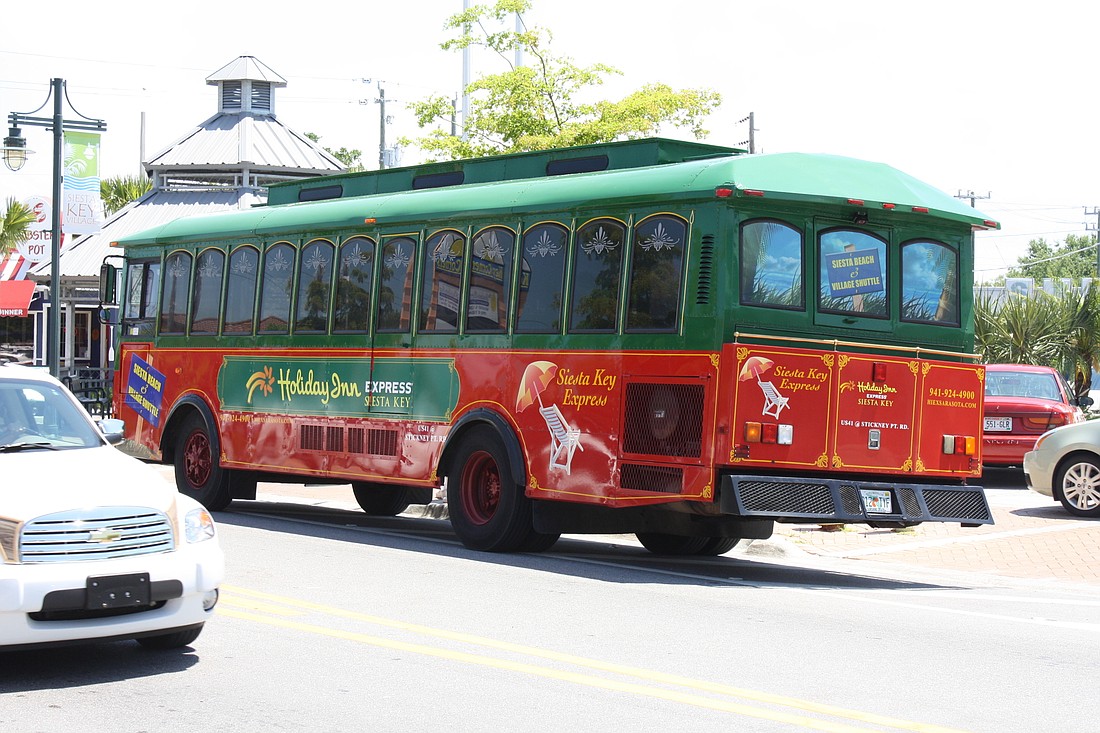- April 25, 2024
-
-
Loading

Loading

Since it began in 2017, the Siesta Key Breeze Trolley has fostered a difference of opinion.
Business owners within the service area say it’s a big help, but many residents decry its effect on the Key’s thoroughfare.
However, some say that with a few minor changes, and the understanding of the give-and-take nature of transit improvements, the trolley can continue to be a vital mode of transportation for the county while getting along better with community residents.
According to county data, the Breeze, which runs from Siesta Village to Turtle Beach Park, serviced 350,320 riders in 2019. That ranks it as the No. 1 Sarasota County Area Transit bus line, ahead of Route 17, which runs on U.S. 41 from Ringling Boulevard to Venice Avenue. Route 17 serviced 288,113 trips in 2019.
The $900,000 annual cost of the trolley amounts to a subsidy per customer trip of $2.57, lower than the SCAT average subsidy per customer trip of $7.86.
The trolley was initially funded in part by grants from the Federal Transit Administration and the Florida Department of Transportation. As those grants run out, the county continues to seek funding for the trolley.
“Having such high ridership shows that it’s being used and used well,” interim SCAT Director Jane Grogg said. “It is something that is appreciated, and the ridership numbers have been increasing each year.”
Siesta Village business owners including Kay Kouvatsos, a co-owner of Village Café, say the trolley has helped bring more patrons to the village.
“In the 25 years I’ve been in the village, there’s been no parking,” Kouvatsos said. “But I see that trolley going up and down the Key, and it’s jam-packed full.”
Still, some Siesta Key residents would like to see improvements to the service, such as bus shelters at its stops and more places for it to pull off the road out of traffic.
Grogg said that as the county’s network goes through a redesign, SCAT is looking to make stop and shelter improvements throughout its system. The Key, in general, Grogg said, is an area where the county would like to make improvements.
Because the Breeze stop at Siesta Key Beach is so popular, Grogg said shelter improvements are being examined there.
In the past, residents have suggested structures made out of fabric to save on cost. However, Grogg said any structure has to meet hurricane and other engineering standards.
Aside from improved shelters, at a February Siesta Key Association meeting, several residents complained about the trolley exacerbating traffic with its frequent stops during season.
Siesta Key Association President Catherine Luckner said that although the trolley does make stops in the road, its service also keeps cars off the road.
“People have been a little bothered by how it slows traffic,” Luckner said. “But imagine if we didn’t have people using that trolley, my goodness.”
Grogg said the trolley stops in the road because there is a constrained width of the road, which gives limited to no access to pull over. Additionally, she said stopping in the road allows passengers to get on and off the bus safely.
Luckner suggested that additional stops could be added to the route by the county. Currently, riders must flag the trolley to get on south of Stickney Point Road.
Alternatively, she said condominiums along the route might be willing to offer their parking lots or drive-thrus as a stop for the trolley.